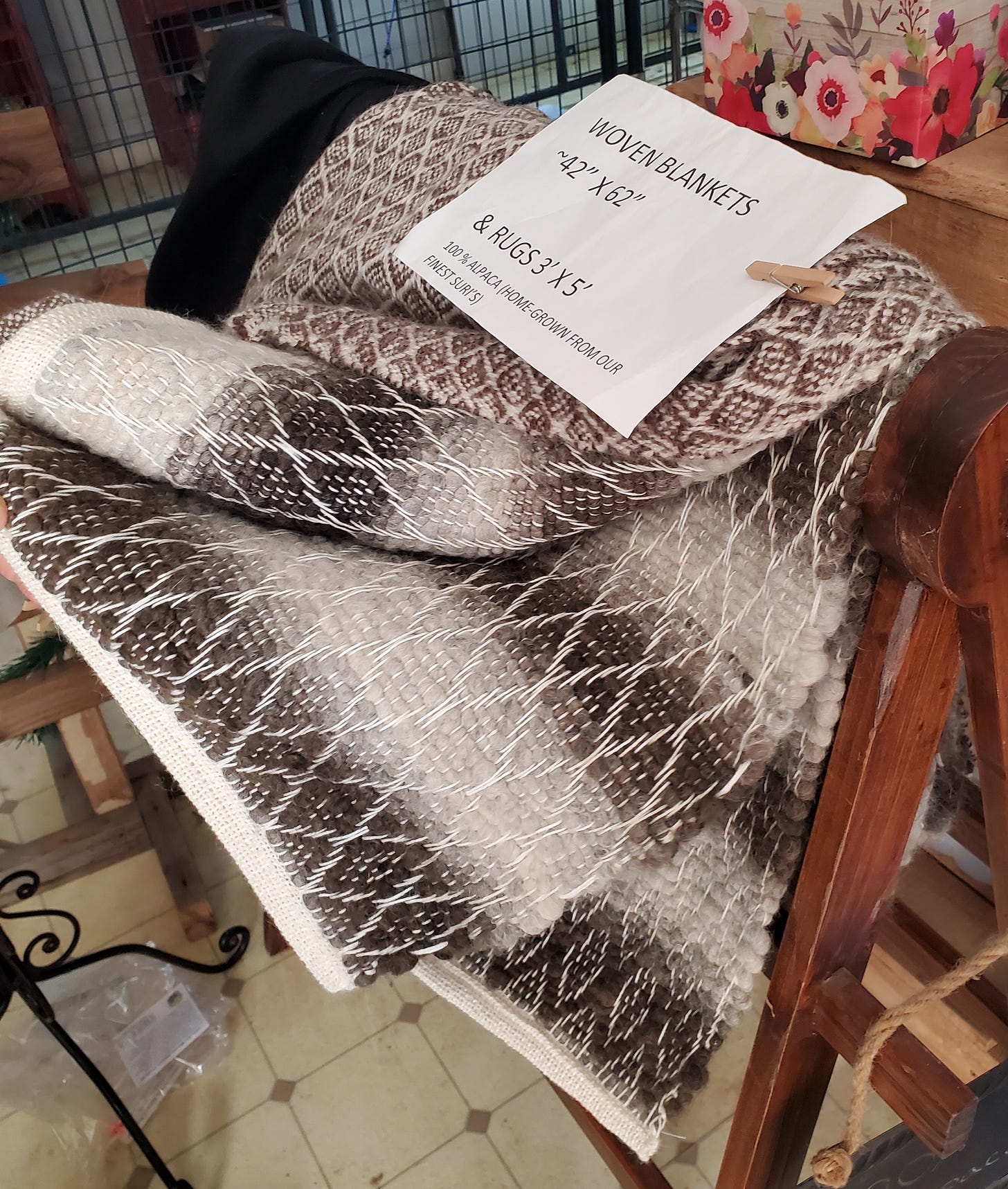Completing Inventory
Today, Cindy & I finished sorting the remaining fiber packages from last year's shearing. Between last week and this, that's approximately 120-140 packages! In addition, we re-sorted each pile by color. Though there are 22 official natural alpaca fleece colors, I sorted the necks & the thirds into five basic colors: black, black/auburn, auburn, "white" (which to me looks beige), "fawn" (a light tan), and multi-colored fleece (from alpacas who literally have multi-colored fleece). I don't have yet have the discernment to identify the basic 22 colors. The multicolored fleece will likely be used for more artisan products.
White is the most preferred color as it is the most frequently & easily dyed. Cindy showed me an interesting color wheel based on a sampling of local & seasonal color-producing plant specific to the San Francisco Bay area. The plant dye is mixed with a mordant, a substance used to set (i.e., bind) dyes on fabrics. The mordant used determines what will get the desired color when mixed with the natural plant. Mordants shown on the color wheel include 1-Solo, 2-Alum, 3-Alum & Iron, & 4-Iron. I look forward to learning about the natural plants used dyes in the So Cal fibershed. Definitely not in the immediate next steps!

Cindy estimated the thirds pile alone was at least 500 pounds of fleece. The necks pile looked to be less in volume than the thirds pile. I wondered out loud how many bags of neck fiber are needed to create one large blanket? Cindy said bout two. Wow, if all last year’s necks are turned into blankets, there's enough fleece from last year for 60 to 80 luxuriously soft woven blankets.
The next steps vary depending on which pile the fiber was sorted into:
Next step for the blankets (called prime fleece) is to separate the "skirt" fleece from that has lesser or inconsistent texture & quality from the prime skirt.
Next step for the prime fiber samples (in ziplocks) is to decide which samples to send to the lab for fiber quality assessment & scoring. The fleece score helps breeders decide which alpacas to breed. It also is a factor in determining an alpaca's market worth (for selling price, stud fees, national ranking, etc.)
Next step for the necks (aka 2nds) is to send them to a mill, with instructions on what to make with each color group.
Next step for the thirds (which are often felted) is to clean & card it all.
Correction: Cindy's Anatolian Shepard is named Tucker, not Luke. I have no idea why I've called him Luke for the past month.






